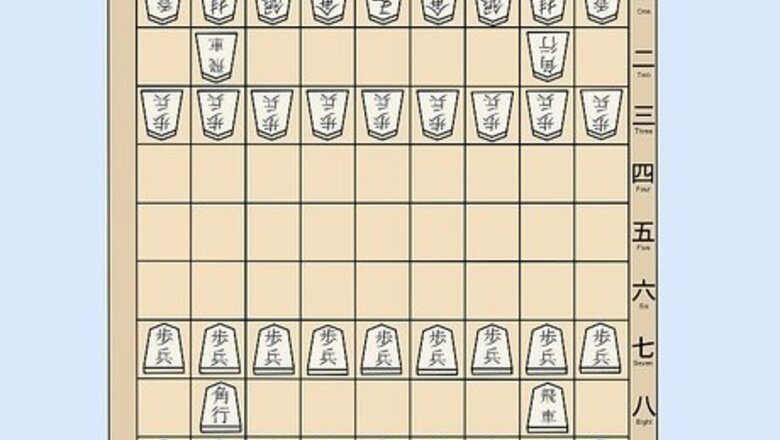
views
Arranging the Board

Place the board on a table, facing in any direction. For Shogi, you'll use a 9x9 grid with 81 squares that are each the same size and color. Two players will face off from opposite sides of the board, but it doesn't matter which sides you use. Once your board is in place, you can arrange your pieces with the characters facing your opponent.
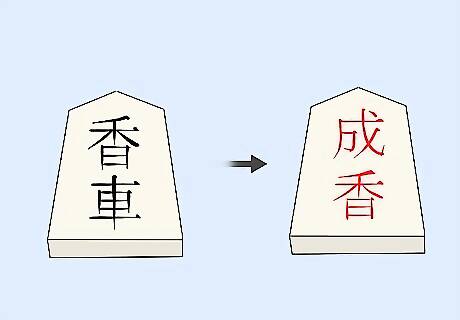
Identify the promoted sides of the game pieces, which are red. Each game piece has 2 sides that feature Japanese characters. The standard side is black, while the "promoted" side is red. You'll place the pieces with the black side up at the beginning of the game. Later, players can "promote" their pieces to give them new powers. Once a piece is promoted, it loses its former capabilities and can only move according to its new powers. Pieces cannot be demoted during the game unless they are captured and removed from the game board. At the start of the game, make sure each game piece has the black side facing up.Tip: Unlike in chess, opposing sides aren't marked by different colors. Instead, the pieces have the same colors and markings, and the opposing sides are identified by the direction they're facing.
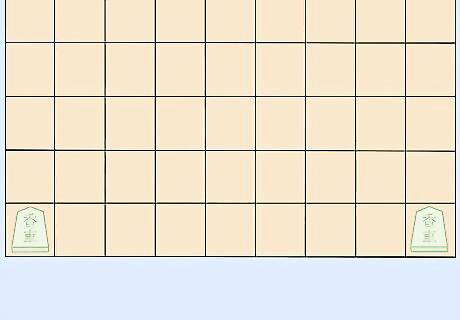
Place each Lance at the corners of the board. This piece can move in a forward direction through as many spaces that are open. It cannot skip over pieces, but it can capture pieces that are in its path, if they belong to your opponent. Your Lance can only capture 1 piece per turn. Each player has a total of 2 Lances. Promoted Lances can move 1 space in any direction, but not backward diagonally.
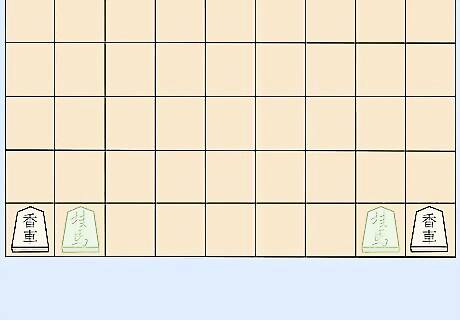
Set your Knights next to your Lances. Knights can move quickly through the board and are the only piece that can jump over other pieces in its path. Knights move forward 2 spaces, then move 1 space left or right. Unlike Western chess Knights, they cannot move backward, horizontally, or vertically. Each player has 2 Knights. Promoted Knights can move 1 space in any direction except backward diagonally.
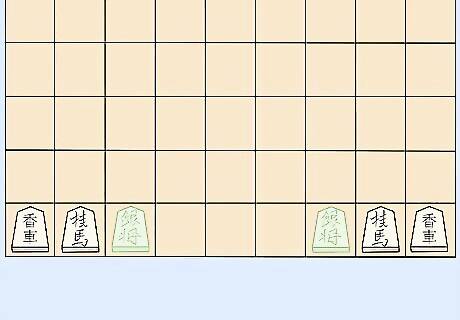
Position your Silver General beside your Knights. The Silver General can move 1 space forward or 1 space diagonally in any direction. You can use this piece to attack your opponent from any direction. There are 2 Silver Generals for each player. Promoted Silver Generals can move 1 space in any direction except backward diagonally.
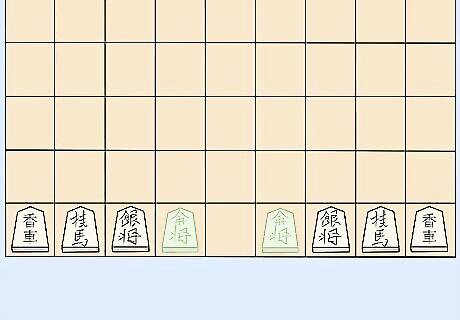
Place the Gold Generals next to the Silver Generals. This piece is also known as the “King’s helper” because your 2 Gold Generals will flank your king. Gold Generals have moves that are similar to the King. They can move 1 space in any direction, except backward diagonally. Each player has 2 Gold Generals. Gold Generals do not have promoted moves.
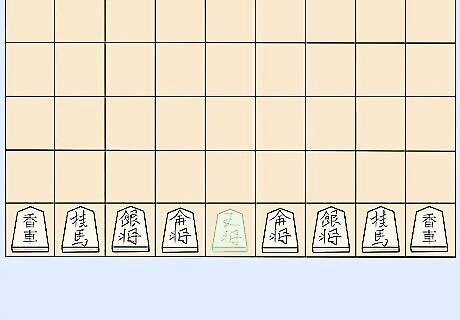
Place the King on the empty square between the 2 Gold Generals. The King is your most important piece and the piece you are trying to protect. Like Western chess, it can move 1 space in any direction. Be careful not to move your King to a space that puts it at risk of being checkmated. Each player has 1 King. The King does not have promoted moves.Tip: Like with Western chess, the goal of Shogi is to checkmate (in Japanese "Tsumi") your opponent's King. That means you want to protect your King at all times. If your King is in "check," you need to try to move it to safety.
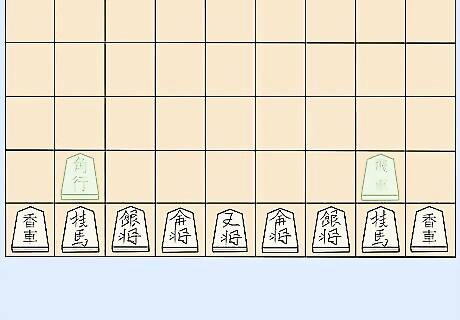
Position the Rook and the Bishop in the squares in front of your Knights. The Rook and the Bishop are the only 2 pieces that start in the second row. The Rook goes in the second square from the right, and the Bishop goes in the second square from the left. Rooks can travel forward, backward, left, or right through all open spaces. Similarly, Bishops can move diagonally through all open spaces. Each player has 1 Rook and 1 Bishop. Both the Rook and the Bishop move in the same way as in Western chess. A promoted Rook can move like a standard Rook, or can move 1 space in any direction. Promoted Bishops also move like a standard Bishop or can move 1 space in any direction.
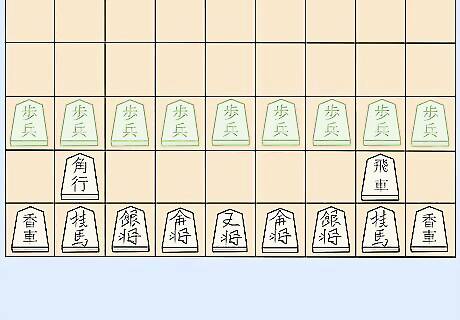
Set each of the 9 Pawns in the third row from the starting position. This is the row in front of your Rook and Bishop. Pawns may be the smallest piece, but they have strength in numbers. Pawns can only move 1 square forward and can never move diagonally. They are often used to block and trap your opponent's pieces. Promoted Pawns can move 1 space in any direction except backward diagonally.
Moving Your Pieces
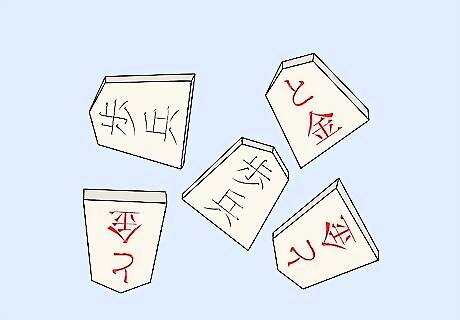
Determine who plays first through “furigoma.” This is a traditional move where a player tosses 5 pawns onto the board as if rolling dice. If the pieces reveal more “promoted” pawns facing upward, then that player will get the second move. If there are more standard pawns facing upward, then they will play first.Variation: As another option, you can use standard dice or an elimination game like “rock-paper-scissors” to decide who goes first.
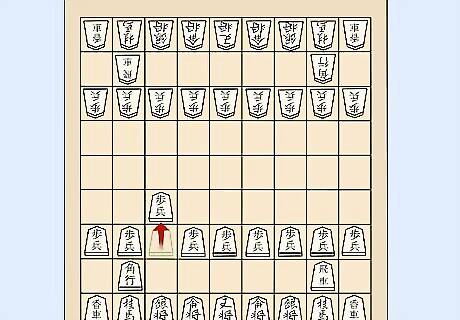
Start the game by moving a pawn. Pawns make up your first row of pieces, so you must move them out of the way before you can move your other pieces. That means the first move for each player will be a pawn. After that, you can move any piece that isn’t blocked by another piece. Knights are the only pieces that can jump over other pieces. However, you still can’t open the game by moving your knight because it would land on a space occupied by one of your pawns.
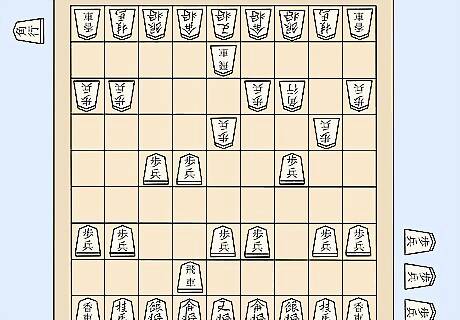
Capture as many of your opponent's pieces as possible. To capture a piece, move one of your pieces onto the space occupied by the piece you want to take. Then, remove the captured piece from the board and place it to your right to keep it handy for later use. Capturing pieces is optional, but it makes your opponent’s side weaker and gives you pieces to drop back into play. You will need to protect your pieces from becoming captured by blocking your opponent's moves. In Japan, captured pieces are traditionally placed on a special platform called a “koma.”
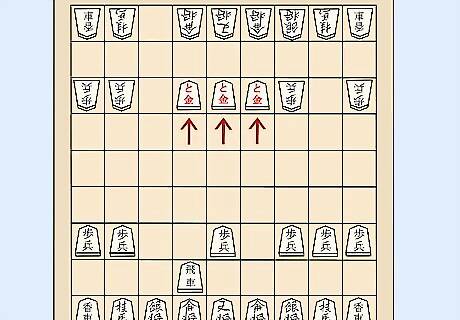
Promote your pieces when they're in rows 7, 8, or 9. The last three rows on each side of the board (the three closest to each player) are the promotion zones. Making a standard, non-dropped move that begins or ends in this area gives you the option to promote the move by turning the piece over onto its red side. Once a piece is promoted, it remains flipped until it’s captured or the game ends. Every piece but the King and Gold General has a promoted side. Promotion is optional in most cases. However, you must promote your pawns and lances in the last row and your knights in the last 2 rows.
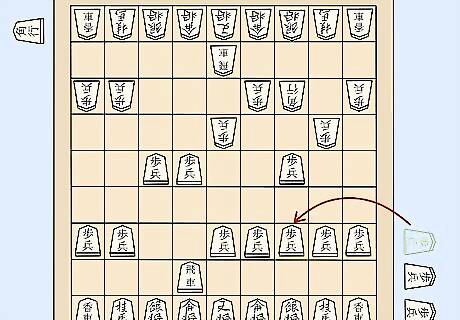
Use “dropping” to revive captured pieces. One of the major differences in shogi and chess is that captured pieces in Shogi can be used again by the player who took them. Once captured, pieces become known as “pieces in hand.” You have an option each turn to put one of your “pieces in hand” back into play by "dropping" it onto an unoccupied square. This can only be done in place of a regular move, and pieces can only be dropped into open spaces on the board. When you drop pieces, they’re always turned to the “standard” side, even if you drop them into the promoted territory. You can’t drop a pawn into a column where you already have an unpromoted pawn. However, it’s okay to drop a pawn into a column where you have a promoted pawn.Tip: Just as you can drop your “pieces in hand” into a “check” position, you can also drop them into the path of danger to protect your King, if possible.
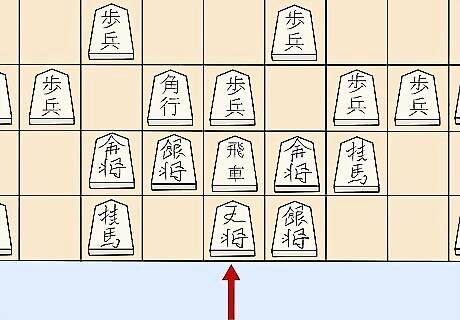
Protect your King from checkmate. If you lose your King, you'll lose the game, so it's important to guard your King. As you move your pieces, make sure you aren't putting your King in danger. Similarly, monitor your opponent's pieces so you can move your King out of the way when your opponent gets too close.
Winning Shogi
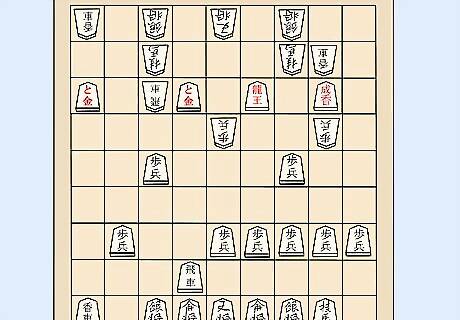
Attack your opponent's king from all sides. As you move your pieces, swarm your opponent's King by plotting attacks from different directions. It's likely they'll notice 1 or 2 advancing pieces, but it's harder to keep an eye on every single direction. While your opponent is focused on your main attack, you can take their king from the other side. It takes practice to master the art of attacking your opponent's King. However, trying out different moves is the best way to gain experience. In every position, you should look at the threats, captures, and checks you can create. If you cannot do any such thing, the position is not good enough. You should look at every piece and think of different ways of maneuvering it.
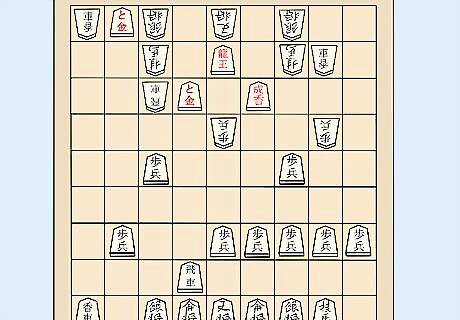
Put your opponent's King in "check." This is when one of your pieces is in a position to potentially capture your opponent's King during your next move. This will force your opponent to make a move to protect their King, if it’s possible. Putting your opponent on constant defense by repeatedly attacking their King is a great strategy for winning the game. It will prevent your opponent from making moves toward your King, and it keeps them on their toes. Just like when playing Western chess, it’s a courtesy to say “check” out loud once you have put your opponent in that position. However, it's not required. In traditional game play, you can’t call “check” 4 times in a row using the same board position. If you do, the game is called, and you lose.
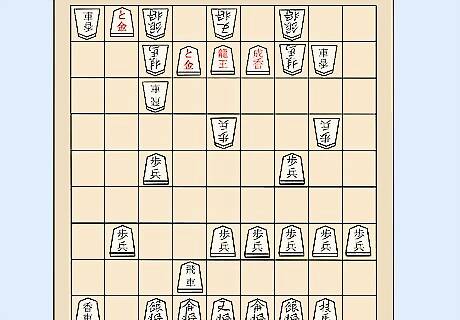
Checkmate your opponent's King. You get a checkmate when your opponent can’t move out of the way of your game pieces. You can then capture their King, which means you win the game. You can also gain a checkmate by dropping captured pieces onto the board. Any piece but a pawn can be dropped into a “check” or “checkmate” position.
Handling a Draw
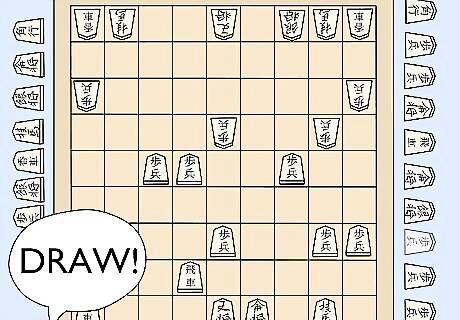
Call a draw when neither play believes they can win. In Shogi, a draw is called a “jishogi.” You may decide to call one if both you and your opponent feel like you have no hope of gaining a checkmate or capturing more pieces. Additionally, you’ll usually call a draw if the same position has occurred during 4 consecutive moves. To determine the winner, you and your opponent will tally up how many points you’ve earned by retaining or capturing pieces. In Shogi, each game piece has an assigned point value that you use to break a draw.
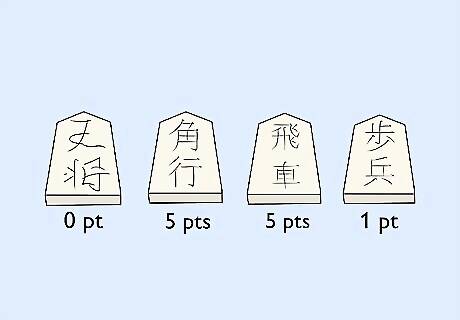
Calculate the point value of your remaining and captured pieces. First, demote each of your promoted pieces, as point values are assigned to the standard side only. Then, give yourself 5 points for any Rooks or Bishops you’ve kept or captured. Then, give yourself 1 point for every other piece, aside from your King.
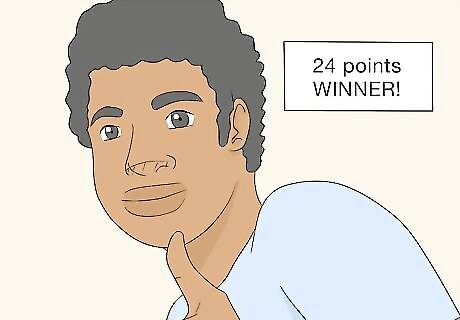
Determine if there is a winner based on point values. Once the points are added up, check to see if either player has fewer than 24 points. If so, then that player loses. However, if both players have at least 24 points, then the game is considered a draw. If you prefer, you can give the win to the player with the highest points. However, this is not how traditional Shogi is played.




















Comments
0 comment